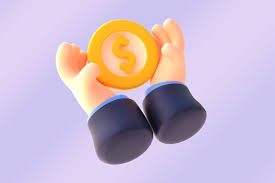What’s the difference between a front axle and a rear axle? The answer might surprise you.
Nowadays, automotive engineering has advanced to such a level that vehicles now come equipped with complex electronic systems.
As the number of parts increases, so does the complexity of their functioning.
Even mechanics can often get confused. That’s why learning about car parts is important.
Once you’ve understood them, you’ll never forget them or have to ask someone else ever again.
You’ll also have a much easier time when you buy or sell a car in UAE.
Major Car Parts
These components form the heart and soul of your vehicle.
They are absolutely essential and will always be checked if you decide to value your car.
1- Engine
The engine is the heart of any vehicle. Without it, the car would not function properly and might not start up at all.
A car engine is an internal combustion engine, which means fuel (gasoline or diesel) is burned inside the cylinder to produce energy.
It is this process that makes the engine run.
2- Engine Block
The engine block is the foundation of your car.
It holds together the engine and provides a place to mount other parts. The engine block is usually cast iron or aluminum.
Aluminum blocks are lighter than cast iron but can crack if they get too hot.
Cast iron blocks are heavier but last longer.
3- Front and Rear Axles
There are two kinds of car axles, front axles and rear axles.
For decades, most cars had only a single wheel assembly that included both axles.
Over time, engineers developed four-wheel assemblies that allow vehicles to operate much more safely and efficiently.
Front and rear axles differ in size, function, and purpose.
Front axles are located at the front of the vehicle; their job is to facilitate steering, absorb shocks from driving on uneven surfaces, and carry the weight of the front part of the vehicle.
Whereas rear axles are positioned at the back; their job is to transmit power between the differential and the driving wheel.
4- Head Gasket
The head gasket is located between the cylinder heads and engine block.
It keeps combustion gases within the cylinders to stop oil and coolant leakage.
If the head gasket fails, oil leaks into the combustion chamber, causing damage to the pistons and rings.
This could cause serious engine damage.
5- Valve Cover
The valve cover is a casing that covers the valve trains. It protects them from debris and helps keep them clean.
It also keeps engine oil from leaking out of the upper part of the engine.
When the valve cover is removed, check the condition of the valves. Consider replacing them if they are cracked or rusty.
Minor Car Parts
Minor car parts are also essential but not to the same degree as major components.
They are cheaper to replace and do not completely stop the car from functioning.
1- Crankcase
The crankcase is a central component in the engine that holds the entire crank mechanism.
2- Intake Manifold
The intake manifold ensures that the air coming into the engine is distributed evenly to all cylinders.
It also helps cool down those cylinders to prevent the engine from overheating.
3- Exhaust Manifold
The exhaust manifold funnels exhaust gases from all the cylinders and routes them to the car’s catalytic converter.
4- Fuel Tank
The fuel tank is where the gas goes when filling up the car.
5- Transmission
The transmission takes power from the engine and turns it into energy that puts the vehicle into motion.
It also adjusts the gear ratio between the drive wheels and engine as the car slows down and speeds up.
6- Valve Spring
Valve springs control the entire valvetrain.
Their job is to ensure that spring pressure is constantly applied to prevent valve bounce.




